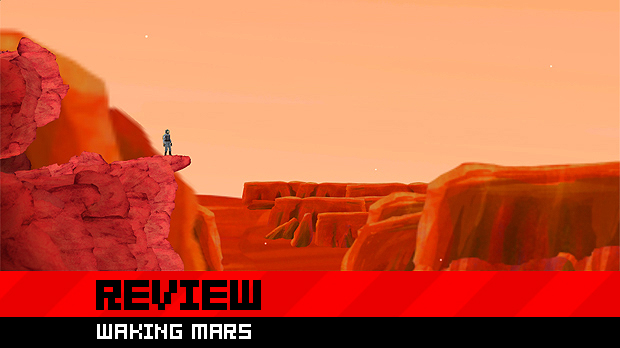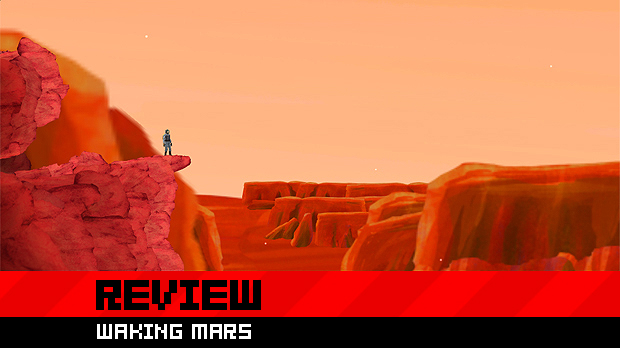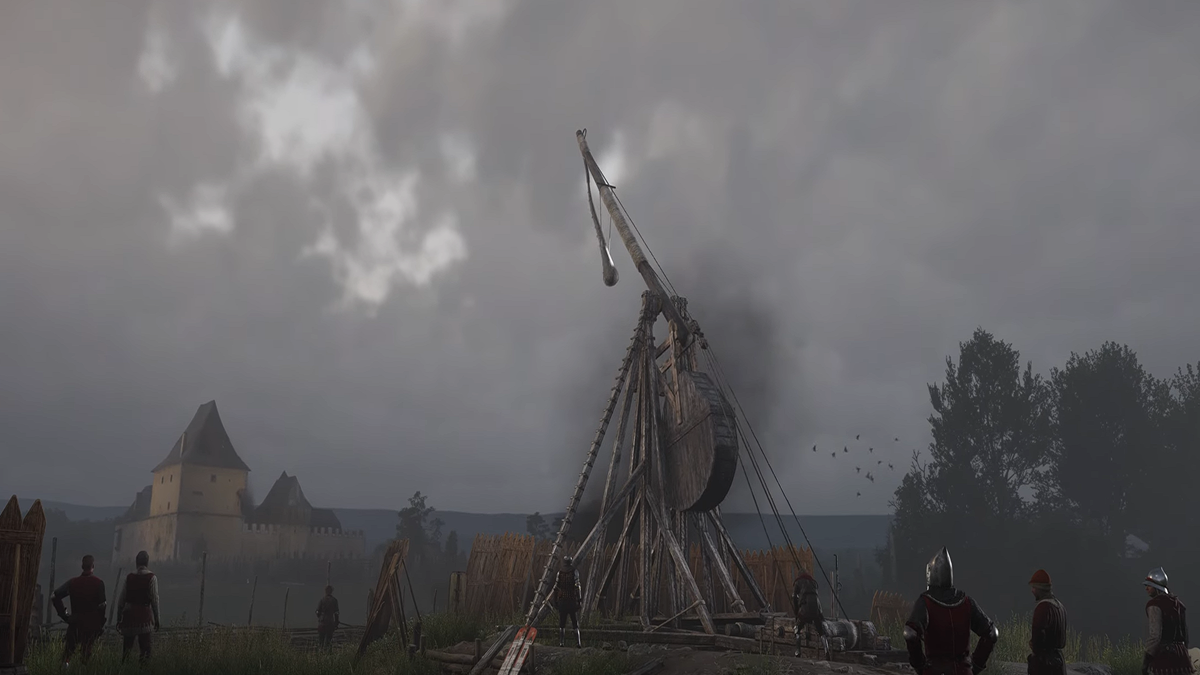Mars is a pretty cool place to explore, especially when you don’t need to blow stuff up.
Over the past couple years, film directors such as Mike Cahill and Duncan Jones have offered a much softer take on the sci-fi genre, one where science, man’s relationship with nature, and personal tragedy trump gun fights and epic alien warfare.
Waking Mars is an attempt to embody this aesthetic into a game that is parts Metroid, The Dig, and Discovery Channel. The result is an iOS release unlike any other, a daring experiment that unfortunately comes with a host of problems.
Waking Mars (iOS)
Developer: Tiger Style
Publisher: Tiger Style
Released: March 1, 2012
MSRP: $4.99
Waking Mars is best described as Dead Space, except the protagonist has seeds instead of guns and there are passive, spore-like alien creatures instead of Necromorphs. Also, there is no Scientology-esque cult. Or boss fights. Or … okay, it’s really nothing like Dead Space, or any other game for that matter.
Waking Mars is an action-adventure that presents players with a large, mostly linear planet to explore. It is filled with lush alien flora, fauna, and other elements that make each locale feel alive — as alive as a big, dry rock can feel, in any case.
You play as American astronaut Liang, who makes first contact on Mars in 2097. After discovering basic lifeforms on the planet, his mission is jeopardized by a cave-in. He is left with only some seeds, an A.I. computer that speaks broken English, and a human guide who can only occasionally be reached by transmission. Liang’s goal is now to survive, find a way back to base camp, and learn about the sentient beings who may occupy the lowest reaches of the planet.

Instead of shooting your way out of this problem, Waking Mars supplies the player with seeds to help grow a lively ecosystem that will open passageways and direct water to dry areas. Each area of the game has a Biomass rating which you must raise to at least three stars, five if you want the superior ending. Knowing the best methods of growing the ecosystem of the planet is essential to steady progress.
Your journey begins easily enough with one or two seed types, but by the end, you have access to a number of options. Despite this, there isn’t much strategy involved. Once you discover the best method — the one that grants you the most Biomass — you’ll just stick to that. The game would be a lot more interesting if it presented various routes with equal benefits. It would help sidestep the redundancy of performing the same task over and over again. It also doesn’t help that most areas present similar, if not identical, obstacles for the player.
While this may sound like “Gardening Mama in Space,” Waking Mars‘ locales are populated by creatures that will throw a wrench in your plans and attack if provoked. Once you get to the later, denser areas, you’ll be dealing with an intricate, convincing ecosystem. Seeing a swarm of the spider-like Phyta creatures fight over a seed for the first time is a memorable moment. For the most part, however, you’ll ignore the denizens of Mars. The real threat in this game is yourself.

Each area of Mars has its own starting conditions and there is no way of resetting them. So, if you make a mistake that triggers a chain reaction of even worse mistakes, you’ll have to fix them all yourself, and that takes time. Things can go south really fast once you start dealing with the plants that shoot out explosive seeds and spores that convert other plants into different types. I found myself spending an extra 30 minutes in some areas to fix my mistakes, and while these are a result of my own actions, Waking Mars could have been a little more helpful in providing a number of plants fixed to an area and area-specific tips. I’m always up for a challenge but when that challenge revolves entirely around a player’s time commitment, I just don’t see the point.
The bigger problem with Waking Mars is that it just isn’t very fun. The touch controls, fantastic soundtrack (dare I say better than Sword & Sworcery‘s music?!), distinct setting, sleek UI, and pacing of the first two-thirds of the game made me feel immersed in a refreshing environment. Planting seeds was kind of simple and jetpacking around the environment was decent enough — awkward on an iPad, obscured by my finger on an iPhone. Despite the simplicity of the game, I enjoyed exploring its world and buying into its convincing fiction (a lot of which is based on scientific theory). Traveling and planting seeds soon becomes second hand and the game switches up scenarios (sometimes you are escaping a hostile area, for instance) often enough to keep things interesting, but then it just gives up.
It’s the final third of the game that drags Waking Mars down. All of a sudden, the path forward isn’t so clear. You are given various objectives without thorough descriptions. Your map is sometimes difficult to read — I’d often think I explored every area only to notice I misread the map due to the color scheme (question icons in place of undiscovered areas would have fixed this).

The simple mechanics soon give way to a painful, thoughtless grind. Since the later areas have high Biomass requirements and more complex layouts, you’ll need to acquire specific seeds to progress. This results in the player needing to make near endless trips back and forth between areas, acquiring seeds in one and planting in the other. It’s like running a bucket between your kitchen and the burning house down the street, but at least that would entail tension and challenge. Instead of feeling like a scientist in an alien world, I began to feel like Mars’ janitor.
Waking Mars is the sophomore effort from Tiger Style, whose debut Spider: The Secret of Bryce Manor turned some heads during the early days of the App Store. Waking Mars is an ambitious game filled with elaborate systems, layouts, and ideas that aren’t fully fleshed out but are novel, nonetheless. Creative designer Randy Smith has a love for science, which is more than apparent through the game’s rich encyclopedic index and plausible sci-fi story and setting, and programmer David Kalina manages to make the world feel alive with creatures that react to each other in realistic ways. Still, that’s not enough to keep the game engaging once the mechanics and systems fight against the player’s curiosity to explore and experience this unique world.
If you are looking for a relaxing adventure title with a distinct mood, Waking Mars will scratch that itch you’ve had since finishing Ghost Trick and Sword & Sorcery. Just take my advice and shut the game off once you start getting frustrated, because things don’t get any better after that point (including the uneventful endgame).





